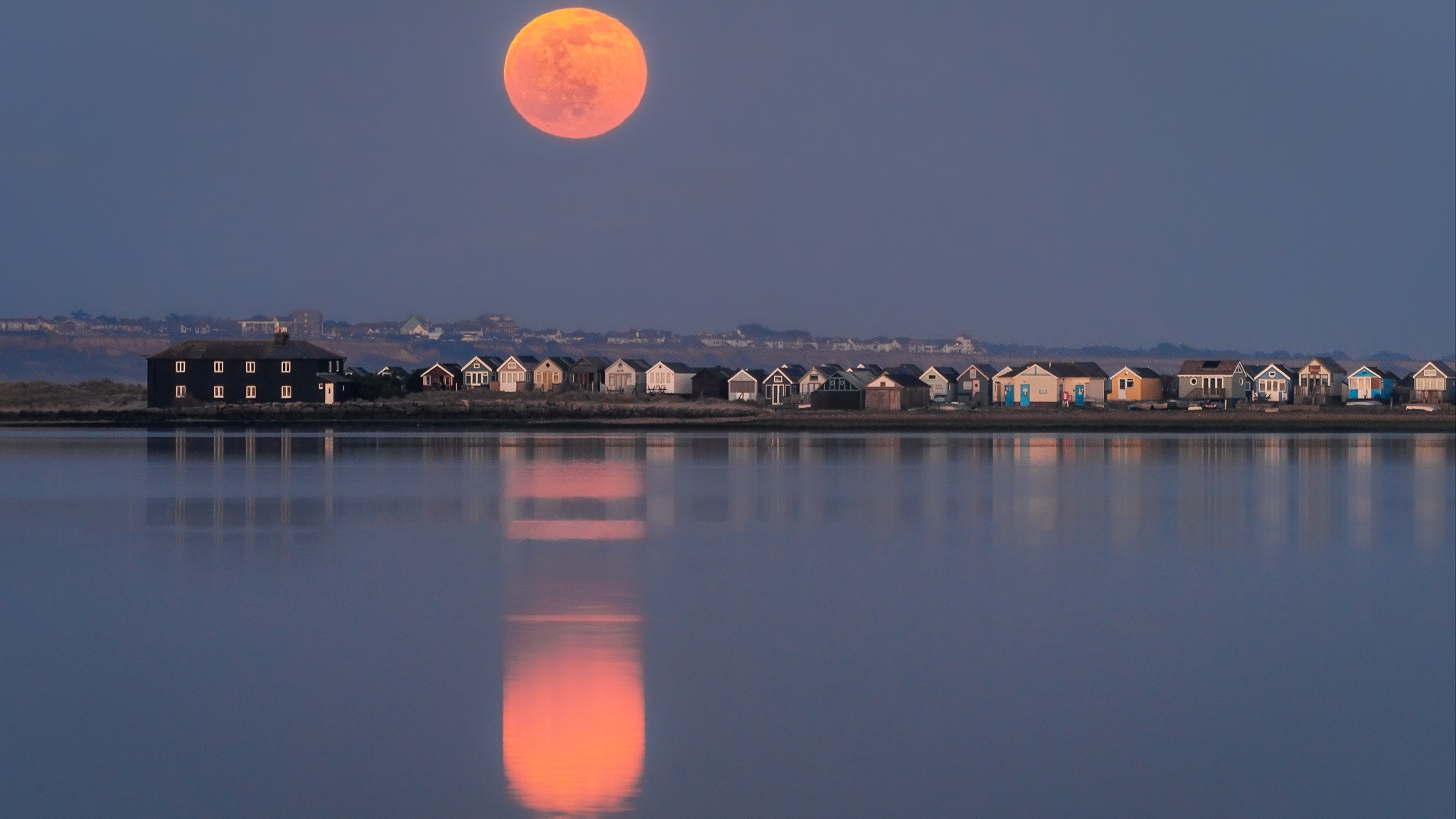
Getting a clear, detailed shot of the moon can be very satisfying and thankfully it isn’t the most complex image to achieve.
But to get a unique, interesting image of the moon is what sets a good photographer apart from the rest. A supermoon always presents a great opportunity to try and capture a special shot.
Supermoons occur when the moon is near its Perigee (or closest point of its slightly imperfect circular orbit of the Earth) at the same time as it is a full moon in the lunar cycle.
During a supermoon, the moon can appear up to 14 percent larger and 30 percent brighter than when it is at its Apogee (farthest point from the Earth).

Looking for a telescope to see the supermoon? We recommend the Celestron Astro Fi 102 as the top pick for a computerized telescope in our best beginner's telescope guide.
What most photographers aim to achieve with a supermoon photo, is something that captures the magnitude of the supermoon and its beautiful orange glow. To achieve this, we need a good bit of planning as well as luck on our side in terms of weather conditions.
The basic, but effective approach that most photographers use is to look for a location with a significant foreground element (a tower, large building, landmark, etc.) Next, find a spot where they can be a considerable distance from that element and align it with the moonrise/moonset. This enables the photographer to zoom right in on the foreground element and use lens compression/perspective to make the moon (the background element) seem bigger than it is.
This sounds relatively easy but can be considerably trickier in practice and even a small miscalculation can mean you need to move the position of your camera. Depending on your chosen foreground that has the potential to make the desired shot unachievable.
The above can be applied to any moon shot of course but the bigger, more super, the better!
The best camera equipment for a supermoon photo
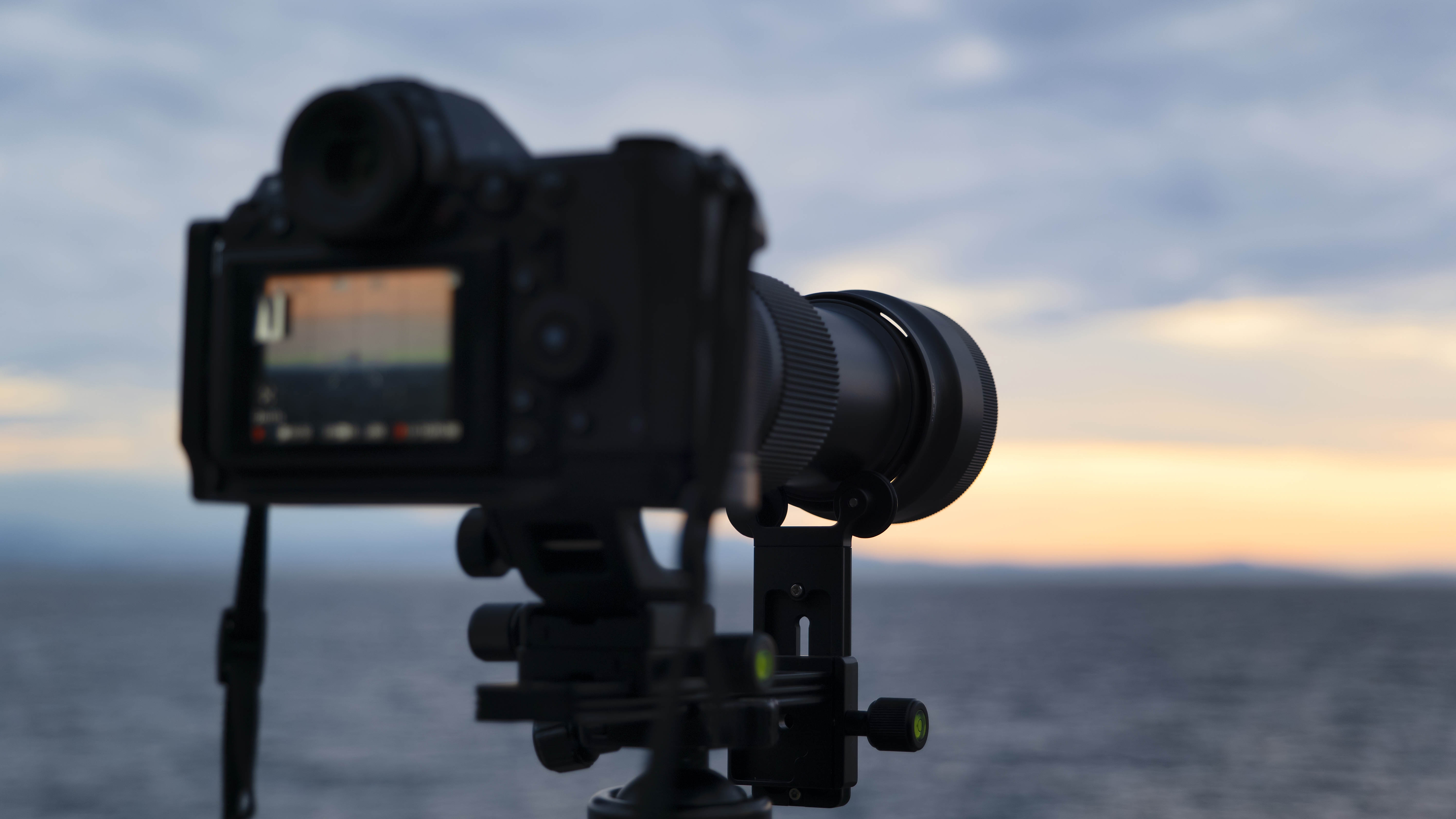
There's a wide range of camera equipment that can help with taking images of the supermoon. Some of it is incredibly expensive, but there are cheaper alternatives that, if you're clever with your gear, can yield fantastic results all the same. On the whole, the main photography equipment you need to photograph a good supermoon shot is as follows:
- Interchangeable lens camera or a bridge camera with a good zoom and manual controls
- A telephoto Lens - 200mm (full-frame equivalent) or more
- A sturdy tripod
- A remote/cable/app shutter release (optional but recommended)
- Optional graduated glass filter
- Planning Apps (e.g. Photopills)
- Weather Apps (e.g. Clear Outside)
How to plan your supermoon composition
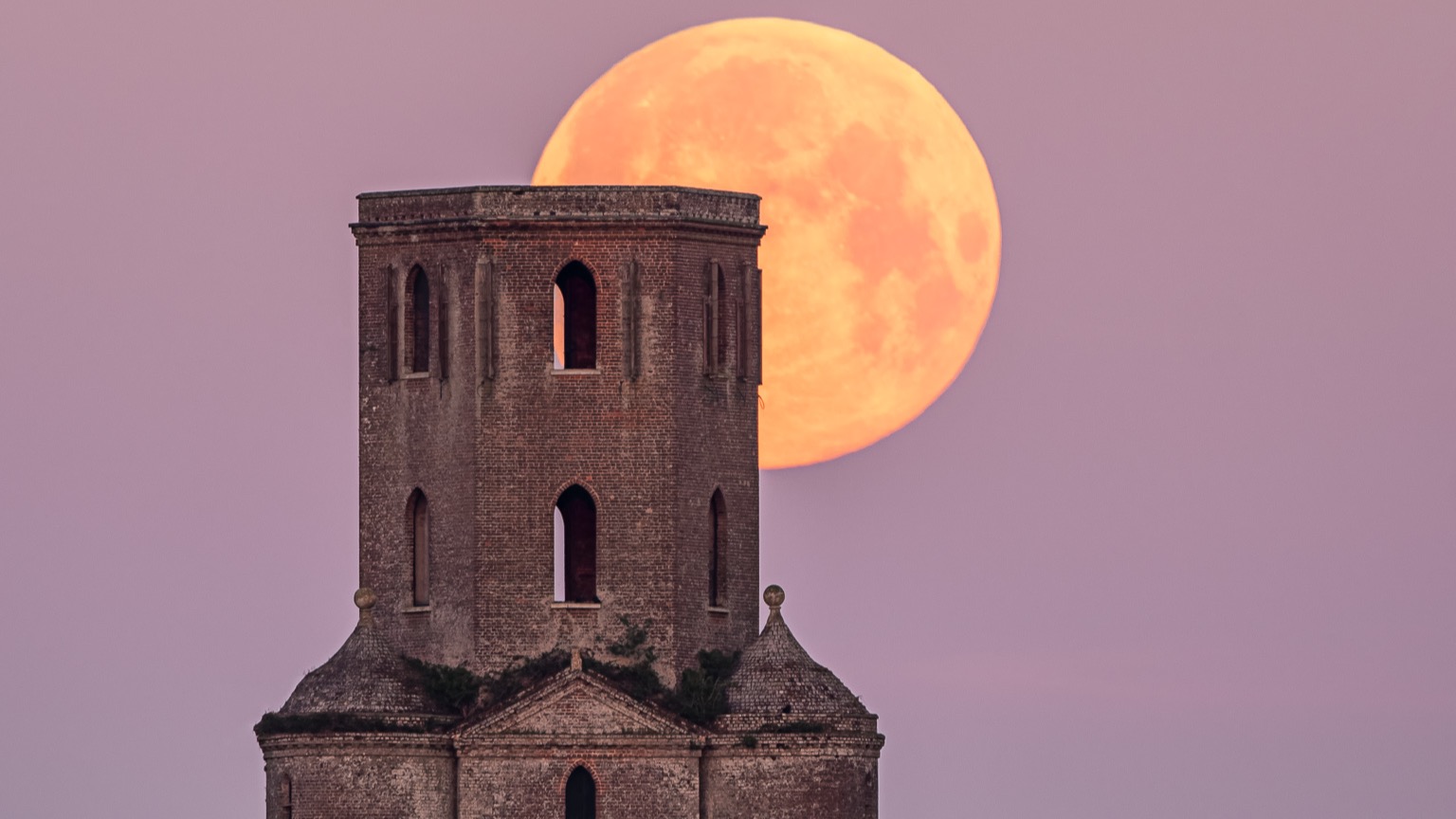
The most obvious thing we need to find out is, when is the next supermoon? In 2024 we are lucky enough to have four supermoons however, the number of supermoons per year varies.
Full moons will rise around sunset and set at sunrise. As the moon rises/sets on the horizon, we view it through more of the dense atmosphere which absorbs blue light, this is what gives it the orange/reddish glow.
It is often easier to shoot a supermoon as it sets, this does mean an early start, but it can be easier to align your ideal shot as you are watching it slowly move out of view as it sets rather than watching it come into view, this gives a little extra time 'with the moon' to set up your composition close to the horizon.
We need to consider the location once we have determined when we will shoot the supermoon. Like the sun, the moon's position on the horizon as it rises/sets will vary slightly throughout the year. This needs to be considered as some locations will work better (or not at all) depending on where the moon is. An isolated tower on a hill would work at almost anytime, but a bridge or arch may only be an appropriate subject for work when they are framing the moon.
Apps such as Photopills or the Photographer's Ephemeris have excellent tools that will allow you to set a future date and time so you can establish a view of the exact position of the moon at the location you want to shoot.
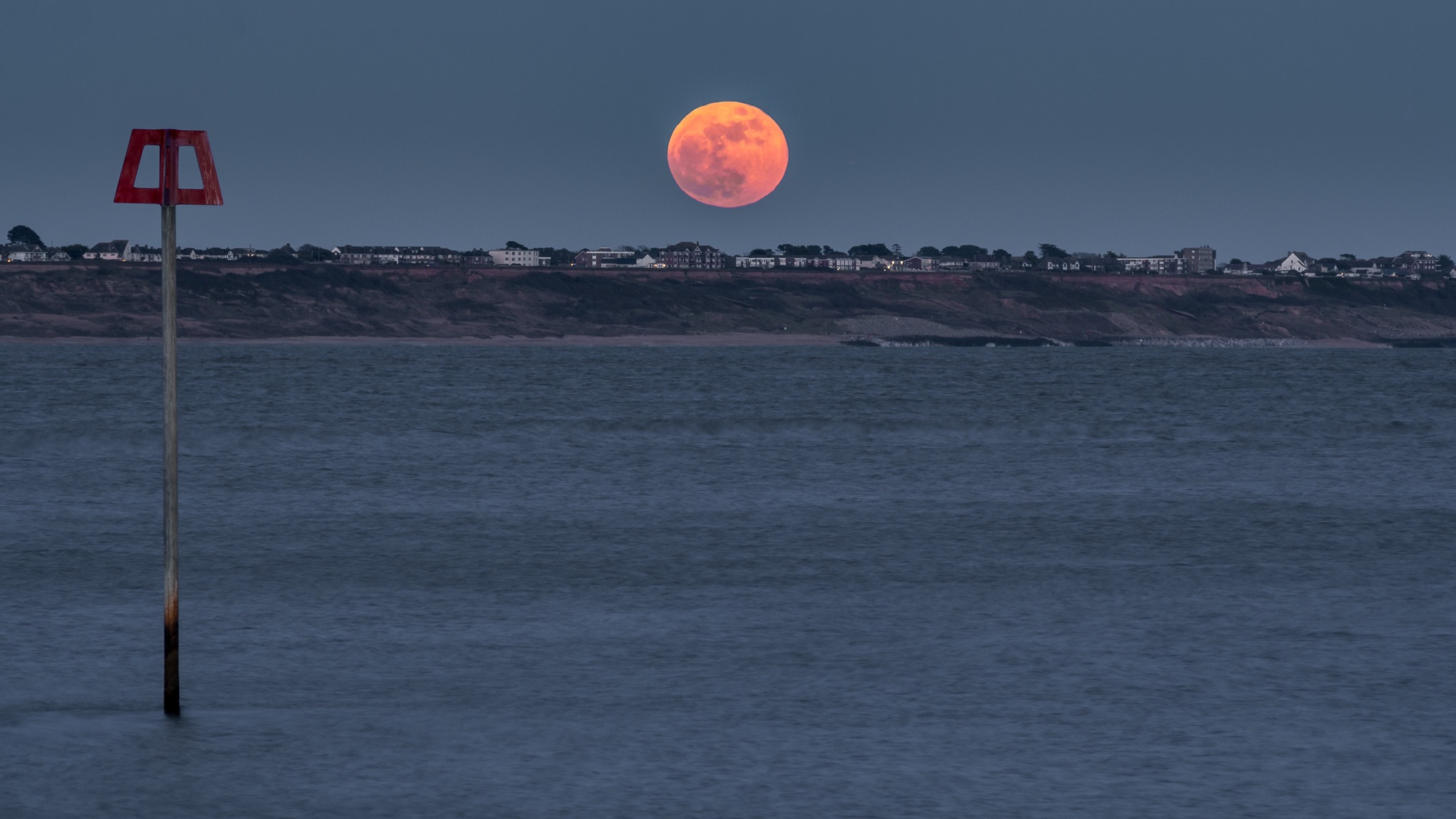
Which camera settings should you use for a supermoon photo?
Once all your planning is complete, we are ready to get out into the field. It is always a good idea to get onsite early as there will undoubtedly be some unexpected variables (traffic/livestock/muddy paths) to deal with before you start shooting.
Set your gear up on a stable tripod and zoom in on your chosen foreground element. The more you can zoom in, the bigger the supermoon will be, but it also becomes trickier to align the shot. A 300mm-400mm lens (full-frame equivalent) is a good option to start with but if you’re able to shoot at 600mm or more the results can be wonderful.
As we are shooting zoomed-in, we will want a larger depth of field, somewhere between f/8 and f/22. It is important to remember that because of the zoom, the 'movement' of the moon will be more pronounced, so we need to keep our shutter speed up and no slower than one second. The ISO needs to be as low as your camera will allow keeping noise to a minimum.
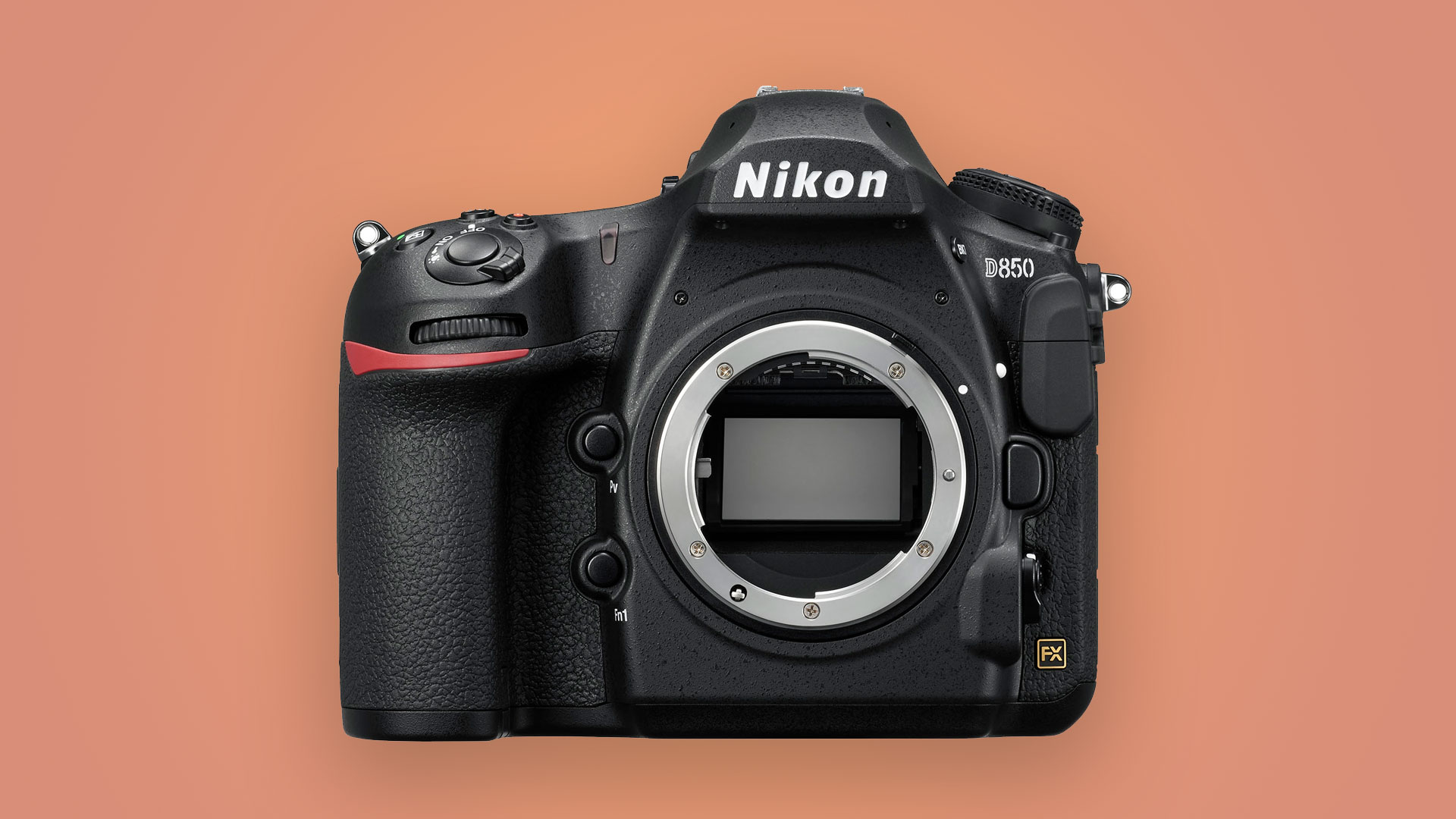
We recommend the Nikon D850 in our best cameras for astrophotography guide.
A tricky element of shooting a supermoon with a foreground element is getting a well-exposed single image. At moonrise, the sun will be setting so as the daylight fades the moon will appear brighter. Continuous adjustments will likely need to be made to keep the foreground from becoming underexposed while preventing the moon from becoming overexposed.
One option to help here would be exposure bracketing and merging them in post-processing, however, our preference is to use a soft graduated glass filter for the sky to help tone down the moon’s brightness a touch.

Most of the time, using the camera's autofocus and targeting the foreground subject will be sufficient, but if you want to look into focusing in more depth (excuse the pun) to get maximum sharpness throughout the frame then you may want to calculate the hyperfocal distance to ensure your foreground is behind it so the moon will still appear sharp in your photograph.
At this point, we are ready to take the shot(s). Shoot for as long as possible from the moment the moon is visible on the horizon until it has significantly lost its color, this is usually around 20 minutes, you'll likely find the shots in the middle of the session come out best.
Make sure you review your shots on your camera and take particular care to look at the histogram to ensure your shadows and highlights are acceptable. Remember to keep an eye on your focus and make sure that your shutter speed does not get slow enough for the moon to lose its sharp edges, it’s much better to push the ISO a little higher than to have an unusable shot!
As with all photography, practice is the most important thing. Don't get disheartened if the first attempt doesn't quite work, learn from any mistakes and try again.
Editor's Note: If you snap an amazing supermoon photo and would like to share it with Space.com's readers, send your photo(s), comments, and your name and location to spacephotos@space.com.
Follow us on Twitter @Spacedotcom and on Facebook.







